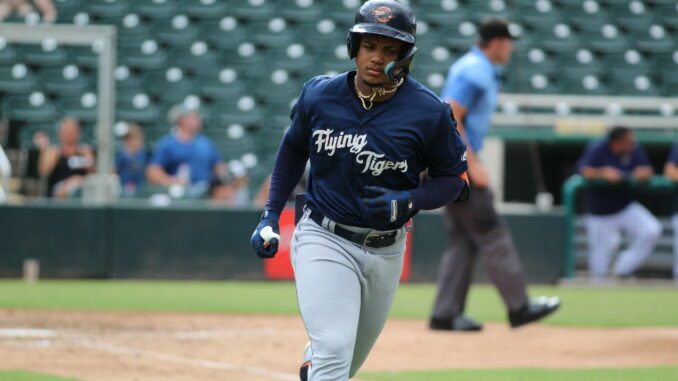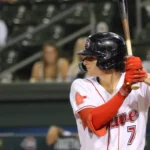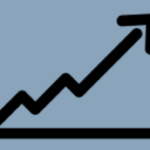
I’m pleased to have the opportunity to bring results from Scout the Statline’s data models to the Prospects1500 audience! In this article, I want to share some prospects of interest that may be underrated by the mainstream consensus based on our statistical data modeling. With this being my first article at Prospects1500, I wanted to take a little time to introduce Scout the Statline to those of you that are unfamiliar with it and share with you how our data models can be leveraged by you. If you’re already familiar with our work or just don’t care to hear me blather about it, feel free to skip the introduction.
Introduction to Scout the Statline
Our objective:
- Bring tirelessly up-to-date, actionable intelligence to the community
- Help bring awareness to potentially mispriced players and prospects
Scout the Statline was designed with dynasty-style fantasy baseball in mind. Since we began working on the project and sharing its results, however, we’ve found that it has a broader appeal than we anticipated, with redraft enthusiasts seeking breakout candidates, card collectors, and general baseball hobbyists finding value in our data models, leaderboards, and findings. We seek to accomplish the objectives above with our data models, underpinned by meticulously researched data science on player aging curves and minor league-to-major league translations. These data models allow us to project everyone to his expected average peak production and draw apples-to-apples comparisons between players.
How Scout the Statline Can Help You Win
I don’t possess the instincts of a scout to predict how well a swing will translate to major league success, what the crack of the ball on that bat means for a player’s power potential, or how the dimensions on a player’s curveball will lead to dominance against established veterans, all before a player has even debuted professionally. In fact, I would say I’m frequently wrong without good information. For example, like many others, I was taken by Khalil Watson’s potential and happily hopped on the hype train last preseason. Watson struggled to keep the strikeouts at bay, and he dropped precipitously from top 25 prospect on MLB Pipeline to unranked by this preseason. Our models allowed me to make adjustments before his market value dropped.
Exhibit A – Trading Khalil Watson for James Wood
As Kenny Rogers says, 🎶you gotta know when to hold them, know when to fold them, known when to walk away, know when to run🎶
The same is true in fantasy baseball.
I just traded Kahlil Watson straight up for James Wood. pic.twitter.com/UYhVLTYpOn
— Ross Jensen (@RossJensen12) May 27, 2022
This is Objective #1 in action.
This seems like a no-brainer now, but at the time it was not, and was seen as reactionary by some.
In addition, our data models, many of which are updated on a daily basis, have helped me consistently beat others to “being in the know” on players.
Exhibit B – My prospects to target early in the 2022 season
2022 highest priority prospect buys:
-Corbin Carroll
-James Wood
-Gunnar Henderson
-Ezequiel Tovar
-Adael Amador
-Emmanuel Rodriguez
-Jordan Lawlar
-Kyle Manzardo
-Jackson Merrill
-Jay AllenWho are you adding?
— Ross Jensen (@RossJensen12) May 28, 2022
This is Objective #2 in action.
These are examples of the benefits our models can bring to the table, and there are countless other success stories that I can also share. You can find out more information on how these models work in the About section of the Scout the Statline website, including information on who qualifies, how the “rank” is determined (important so you can adjust based on your needs), and how these leaderboards can be used.
Scout the Statline’s data models shut out all the external noise and focus on what’s most important: a player’s productivity given his age and level of performance. Its predictiveness is back-tested and its efficacy in helping find big-name prospects is proven. However, it cannot predict abnormal player development before it happens. The breakouts have to be observed as they are occurring.
The models are always more effective when accompanied by a systematic process. On the Scout the Statline end, this means consistently updating our data daily to ensure the most recent information is available and providing expert analysis to accompany it (including daily prospect highlights during the season to shine a light on the high risers we see). On your end, the best practice is to check in frequently to make sure you are aware of how the landscape is changing (check our leaderboards, read the player highlights, follow us on Twitter for automated updates, etc). And of course, continue to take in contextual information from scouts and Prospects1500 analysts: seek confluence and validation. Combining Scout the Statline data with your process will help ensure that you beat your competition to The Next Big Thing every day.
My personal checklist for success (let’s call it a three-legged stool):
- Check in to Scout the Statline daily (consider a membership for the best information)
- Follow Scout the Statline on Twitter for automated updates and real-time info nuggets
- Validate your findings with industry analysts and scouts (you’re already at a great place for this here at Prospects1500)
Prospects Flying Under the Radar
Now it’s time to get to the meat and potatoes of the article; what you all came here for! Who do our data models say is being overlooked by mainstream consensus? I’ve scoured as many top prospect lists as I can to gather an aggregated consensus (this is the average rank across 10 different publications for the 2023 preseason), and here’s who our data says you should be looking at before the 2023 season kicks off!
***Note: clicking on the player hyperlink will take you to a video clip where we break down the player’s statistical performances and what the data model sees in them.
| Player | Position | Scout the Statline | Aggregated
Consensus |
P1500 Consensus | Personal Rank |
| Hunter Brown | SP | 5 | 43 | 43 | 31 |
| Esteury Ruiz | OF | 6 | 62 | 68 | 22 |
| Emmanuel Rodriguez | OF | 8 | 55 | 50 | 14 |
| Vaun Brown | OF | 15 | 222 | 183 | 93 |
| Brandon Walter | SP | 20 | 397 | 190 | 97 |
| Edgar Quero | C | 23 | 173 | 50 | 34 |
| Edouard Julien | 2B | 27 | 97 | 100 | 35 |
| Christian Encarnacion-Strand | 3B | 29 | 72 | 88 | 39 |
| Cristian Santana | SS | 41 | 368 | 158 | 78 |
| Eddinson Paulino | SS | 49 | 295 | 174 | 84 |
| Tyler Gentry | OF | 54 | 195 | 132 | 55 |
| Shane Sasaki | OF | 55 | 437 | 186 | 94 |
| Thomas Saggese | 2B | 68 | 302 | 160 | 79 |
This list of players includes breakouts (Saggese, H. Brown), power/speed threats (Paulino, V. Brown), overlooked talent (Gentry, Walter), players with superior plate discipline (Quero, Rodriguez, Julien, Santana), speed demons (Ruiz, Sasaki), and mashers (Encarnacion-Strand). Each appears underrated when judged side-by-side with consensus rankings, but cannot be ignored by the numbers.
It’s pretty obvious why they rank so highly by Scout the Statline when you look up most of their profiles: Esteury Ruiz, for example, stole 87 bases on the season, Christian Encarnacion-Strand hit 32 home runs, and Emmanuel Rodriguez put up a gaudy .493 OBP on the season. For others, such as Cristian Santana, it’s less obvious, and more about his performance with consideration of his age and the level he played at. At just 18 years old, Santana was very aggressively challenged with an assignment to Single-A. This context makes his season look much better in the eyes of our data model than it may first appear.
After the season begins, the landscape changes quickly as new information is constantly fed into our models. I’m looking forward to sharing more findings as the season unfolds!




Great info and will target a lot of your guys this year since you and Scout the Statline helped me pick up several guys before anyone else.
I have 2nd pick of kids that not on a major league team yet in AL only who are your top 2